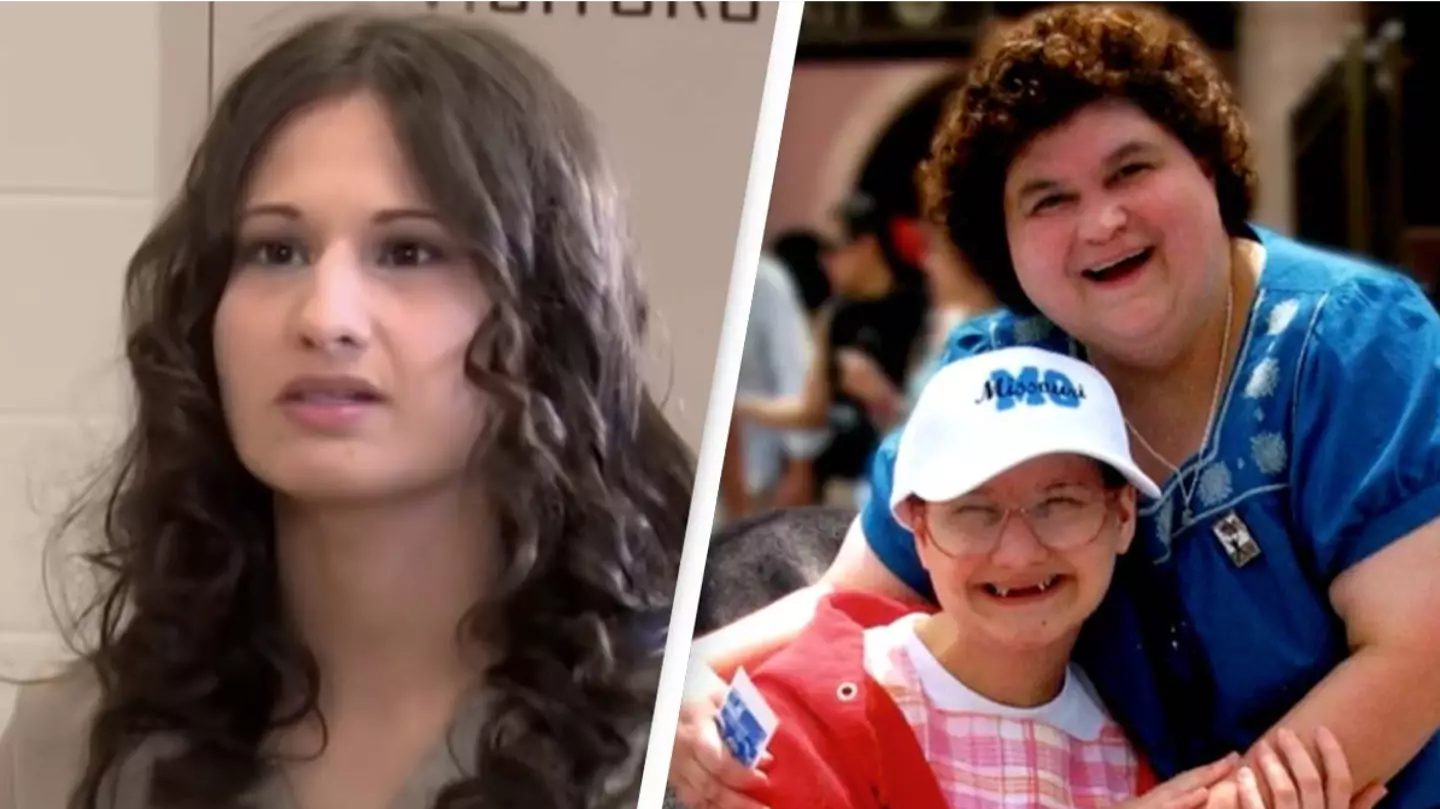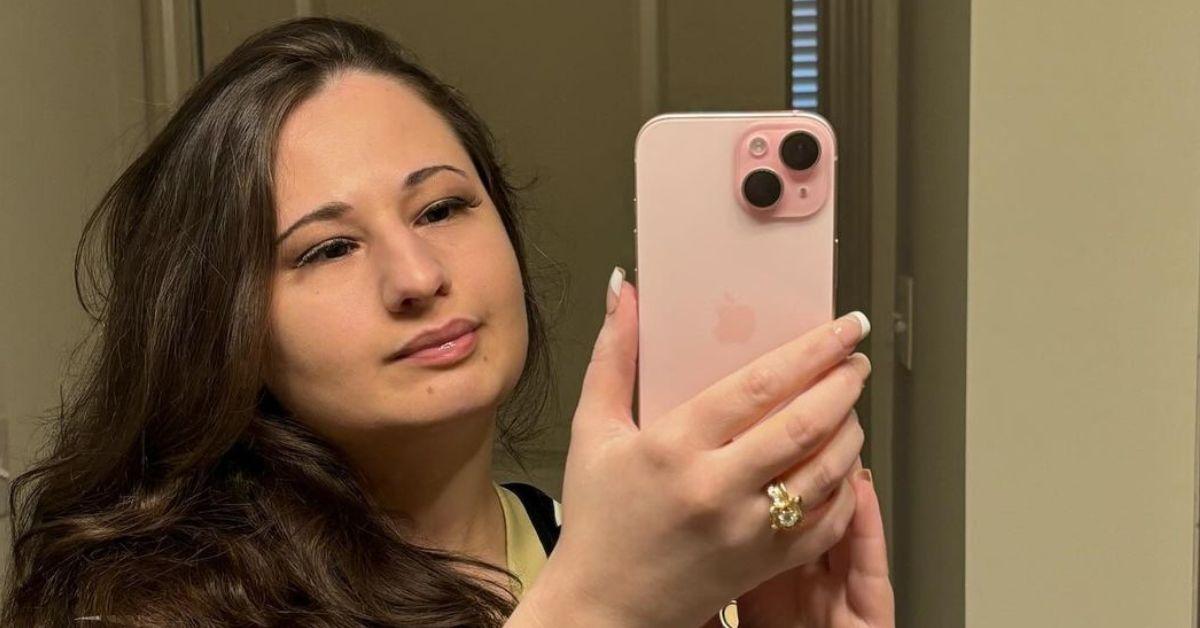Get ready for a story that’s as twisted as it gets. The name Gypsy Rose Blanchard has been plastered all over headlines, documentaries, and even a Netflix movie. But here's the million-dollar question—how old was Gypsy when she killed her mom? This is not just a crime story; it's a deep dive into betrayal, manipulation, and the dark side of human relationships. Let's peel back the layers and uncover the truth.
Picture this: a young woman accused of orchestrating her mother’s murder. It’s the kind of plot that could only come from a soap opera, but this is real life, folks. The world watched in disbelief as the details unfolded, and the question on everyone’s lips was simple yet haunting—how old was Gypsy when she killed her mom? Spoiler alert: it’s not what you think.
This isn’t just about the numbers. It’s about the why, the how, and the shocking revelations that came to light. Gypsy’s story isn’t just a crime drama; it’s a psychological thriller that leaves you questioning the boundaries of trust and love. So, buckle up because we’re diving headfirst into one of the most talked-about cases of our time.
Read also:Search Resumes For Murder Victims Body The Unyielding Pursuit Of Justice
The Background: Who Was Gypsy Rose Blanchard?
Before we jump into the juicy details, let’s take a step back and talk about who Gypsy Rose Blanchard really was. Born on June 26, 1991, in Springfield, Missouri, Gypsy grew up in a world that seemed anything but ordinary. Her mother, Dee Dee Blanchard, claimed her daughter suffered from a host of severe medical conditions, including muscular dystrophy and leukemia. This led to a life of isolation for Gypsy, who was kept away from the outside world under the guise of protecting her fragile health.
But here’s the kicker: much of what Dee Dee claimed about Gypsy’s illnesses was fabricated. As the truth began to surface, it became clear that Gypsy’s life was a web of lies spun by her overprotective mother. This raises an important question: was Gypsy’s decision to kill her mom driven by revenge, desperation, or something far more sinister?
A Quick Glance at Gypsy’s Early Life
Let’s break it down with some quick facts about Gypsy’s early years:
- Gypsy was diagnosed with various illnesses by her mother, but medical professionals later revealed these claims were false.
- She was homeschooled and rarely allowed to interact with others outside her immediate family.
- Dee Dee controlled every aspect of Gypsy’s life, including her diet, education, and social interactions.
It’s no wonder Gypsy felt trapped. Her mother’s control went beyond what most people could imagine, and this set the stage for a tragic series of events.
Biography of Gypsy Rose Blanchard
Gypsy's Personal Data
Here’s a quick rundown of Gypsy’s personal information to give you a clearer picture:
| Full Name | Gypsy Rose Blanchard |
|---|---|
| Date of Birth | June 26, 1991 |
| Place of Birth | Springfield, Missouri |
| Occupation | Student (homeschooled) |
| Known For | Her involvement in her mother’s murder |
Now that we’ve got the basics out of the way, let’s dive deeper into the heart of the matter.
Read also:Reporter Challenges Speaker Johnson On Shutdown A Deep Dive Into The Political Tugofwar
How Old Was Gypsy When She Killed Her Mom?
Alright, let’s cut to the chase. Gypsy Rose Blanchard was 23 years old when she orchestrated the murder of her mother, Dee Dee Blanchard. But here’s the thing: age is just a number. What really matters is the circumstances that led to this chilling event. Gypsy didn’t wake up one day and decide to kill her mom. This was the culmination of years of manipulation, control, and psychological abuse.
Think about it: Gypsy spent her entire life being told she was too sick to live a normal life. She was denied basic freedoms and forced to depend entirely on her mother. When she finally discovered the truth about her so-called illnesses, it’s no surprise she felt betrayed. But did that justify her actions? That’s the million-dollar question.
The Timeline of Events
Let’s break it down step by step:
- Gypsy was 23 years old at the time of the murder.
- She enlisted the help of Nicholas Godejohn, a man she met online, to carry out the plan.
- On July 23, 2015, Godejohn stabbed Dee Dee Blanchard multiple times, leading to her death.
It’s a story that sends shivers down your spine. But it’s also a reminder of the devastating consequences of manipulation and control.
Why Did Gypsy Kill Her Mom?
This is where things get really interesting. On the surface, it seems like a case of a daughter seeking revenge against a controlling mother. But the truth is far more complex. Gypsy claimed that her mother’s manipulation went beyond what most people could endure. She accused Dee Dee of fabricating her illnesses to maintain control over her life.
Here’s the kicker: medical professionals later confirmed that Gypsy was not nearly as sick as her mother claimed. In fact, she was in relatively good health. This revelation added fuel to the fire, sparking a national conversation about Munchausen syndrome by proxy—a condition where caregivers fabricate or induce illnesses in those under their care.
The Psychology Behind the Crime
So, what drove Gypsy to take such drastic measures? Experts suggest it was a combination of factors:
- Years of psychological manipulation by her mother.
- A desperate desire for freedom and independence.
- The influence of Nicholas Godejohn, who she believed loved her unconditionally.
It’s a recipe for disaster, and unfortunately, it ended in tragedy.
The Legal Aftermath
When the dust settled, Gypsy found herself facing the legal consequences of her actions. In 2016, she pleaded guilty to second-degree murder and was sentenced to 10 years in prison. Nicholas Godejohn, the man who carried out the actual killing, was sentenced to life in prison without the possibility of parole.
But here’s the twist: Gypsy’s case sparked a national conversation about the ethics of prosecuting victims of abuse. Many argued that her actions, while undeniably wrong, were the result of years of manipulation and control. Others believed justice was served, and Gypsy deserved to pay for her crimes.
What Happened to Gypsy After the Trial?
Gypsy served her time and was released on parole in 2021. Since then, she has kept a low profile, avoiding the media and public scrutiny. But her story continues to resonate, serving as a cautionary tale about the dangers of manipulation and the lengths people will go to regain their freedom.
The Impact on Society
Gypsy’s case didn’t just shock the world—it sparked a larger conversation about the complexities of abuse and manipulation. It forced people to confront uncomfortable truths about the lengths some individuals will go to maintain control over others. It also shed light on the importance of recognizing and addressing psychological abuse before it escalates into something far more dangerous.
Here are some key takeaways:
- Munchausen syndrome by proxy is a real and devastating condition that can have long-lasting effects on victims.
- Abuse isn’t always physical; psychological manipulation can be just as damaging.
- Victims of abuse often face difficult choices, and their actions should be viewed through a lens of understanding rather than judgment.
It’s a story that reminds us all to be more aware of the signs of abuse and to offer support to those who need it most.
Lessons Learned from Gypsy’s Story
As we wrap up this deep dive into Gypsy’s world, it’s important to reflect on the lessons we can learn from her story. First and foremost, it’s a reminder of the dangers of unchecked power and control. It also highlights the importance of recognizing and addressing abuse in all its forms.
But perhaps the most important lesson is this: no one deserves to live a life of fear and manipulation. Gypsy’s story is a testament to the resilience of the human spirit and the lengths people will go to reclaim their freedom. While her actions were undeniably wrong, they also serve as a wake-up call for society to do better in protecting those who are most vulnerable.
What Can We Do to Prevent Similar Tragedies?
Here are some actionable steps we can take:
- Educate ourselves and others about the signs of abuse and manipulation.
- Support organizations that provide resources and assistance to victims of abuse.
- Foster open and honest conversations about mental health and well-being.
Together, we can create a world where no one has to face the kind of trauma Gypsy endured.
Conclusion: How Old Was Gypsy When She Killed Her Mom?
So, there you have it—the shocking truth about Gypsy Rose Blanchard and the murder of her mother. Gypsy was 23 years old when she orchestrated the crime, but her age is just the tip of the iceberg. This is a story about manipulation, control, and the lengths people will go to reclaim their freedom. It’s a reminder of the importance of recognizing and addressing abuse in all its forms.
As we move forward, let’s use Gypsy’s story as a catalyst for change. Let’s work together to create a world where no one has to live in fear or isolation. And remember, if you or someone you know is experiencing abuse, help is available. Speak up, reach out, and make a difference.
What do you think about Gypsy’s story? Do you believe justice was served, or was she a victim of circumstances beyond her control? Leave your thoughts in the comments below, and don’t forget to share this article with your friends and family. The more we talk about these issues, the better equipped we’ll be to prevent similar tragedies in the future.
Table of Contents
- The Background: Who Was Gypsy Rose Blanchard?
- Biography of Gypsy Rose Blanchard
- How Old Was Gypsy When She Killed Her Mom?
- Why Did Gypsy Kill Her Mom?
- The Legal Aftermath
- The Impact on Society
- Lessons Learned from Gypsy’s Story
- Conclusion: How Old Was Gypsy When She Killed Her Mom?


